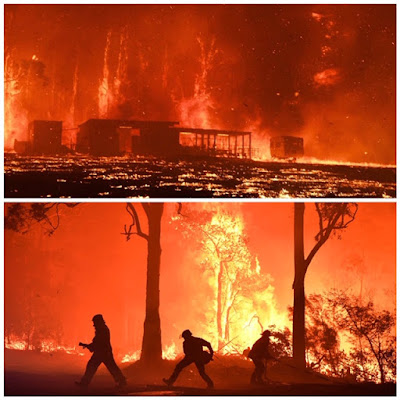So for the time being our water problems are over.
Below is a weather radar shot of our area during that week. It’s been a long time since we have seen that kind of picture.

We have picked, crushed and pressed the Tempranillo which came in at 13.0° Baume which is right on my preferred sugar specification. I guess the rain didn't affect it much from a juice dilution point of view. However there was some shrivel as a result of the drought induced leaf loss earlier in the season as well as some botrytis, so ‘it was time’.
The Pinot Noir has been pressed with egg white added to settle the solids and French oak chips to impart an oaky flavour. We are just waiting for malolactic fermentation (MLF) to take place so we can add sulphur to stabilise the wine and then let time and chemistry do its work.

MLF is a process where lactic acid bacteria convert the harsh malic acid in the wine to softer lactic acid. This will normally occur naturally but I had added a lactic bacteria culture to the juice before fermentation to help things along. It’s better to have this happen during bulk maturation in a tank or barrel rather than in the bottle. At worst exploding bottles can occur due to the build up of carbon dioxide. In the "old days" corks were just pushed out of the bottle but now with screw caps a mini bomb has been created. Apart from that no one wants to drink fizzy or ‘prickly’ dry red wine. It is a wine fault. There is quite a complicated test to determine when MLF has taken place but I just use the fact that carbon dioxide is generated (bubbles) and an increase of pH as indicators.
The major problem here is that process will only take place in the absence of sulphur so the wine is unprotected for a while. We attempt to overcome this by ensuring the tank is well sealed and there is no ullage.
The Semillon has finished fermentation and we have added 50ppm sulphur to prevent oxidation. We will wait a while until the lees (dead yeast cells and other solids) settle then rack the wine off to begin the clarification process.
We have bottled last year’s Cabernet and put one aside with a 2009 Semillon and 2008 Cabernet/Tempranillo blend to enter in the Milton Agricultural Show wine competition in early March.

I took delivery of 40 bales of lucerne hay, which will be our winter feed supplement. It is a bit early in the year to be thinking about this but the price and quality were too good to pass up. Neighbour Bob has taken my cattle into one of his paddocks to get it eaten down before he does some remedial work on it. That will fatten up the five bulls that are going to market on 1st March.
So there is a lot happening. The co-driver’s niece, Crystal, arrives in a few weeks from the USA and it looks as though she will be enjoying some early autumn weather. There is a definite feeling of that in the air already some mornings. The days are still getting to the 30° C mark so there is still plenty of beach time left. The next three months are our favourites on the South Coast weather wise.
The major problem here is that process will only take place in the absence of sulphur so the wine is unprotected for a while. We attempt to overcome this by ensuring the tank is well sealed and there is no ullage.
The Semillon has finished fermentation and we have added 50ppm sulphur to prevent oxidation. We will wait a while until the lees (dead yeast cells and other solids) settle then rack the wine off to begin the clarification process.
We have bottled last year’s Cabernet and put one aside with a 2009 Semillon and 2008 Cabernet/Tempranillo blend to enter in the Milton Agricultural Show wine competition in early March.

I took delivery of 40 bales of lucerne hay, which will be our winter feed supplement. It is a bit early in the year to be thinking about this but the price and quality were too good to pass up. Neighbour Bob has taken my cattle into one of his paddocks to get it eaten down before he does some remedial work on it. That will fatten up the five bulls that are going to market on 1st March.
So there is a lot happening. The co-driver’s niece, Crystal, arrives in a few weeks from the USA and it looks as though she will be enjoying some early autumn weather. There is a definite feeling of that in the air already some mornings. The days are still getting to the 30° C mark so there is still plenty of beach time left. The next three months are our favourites on the South Coast weather wise.
























